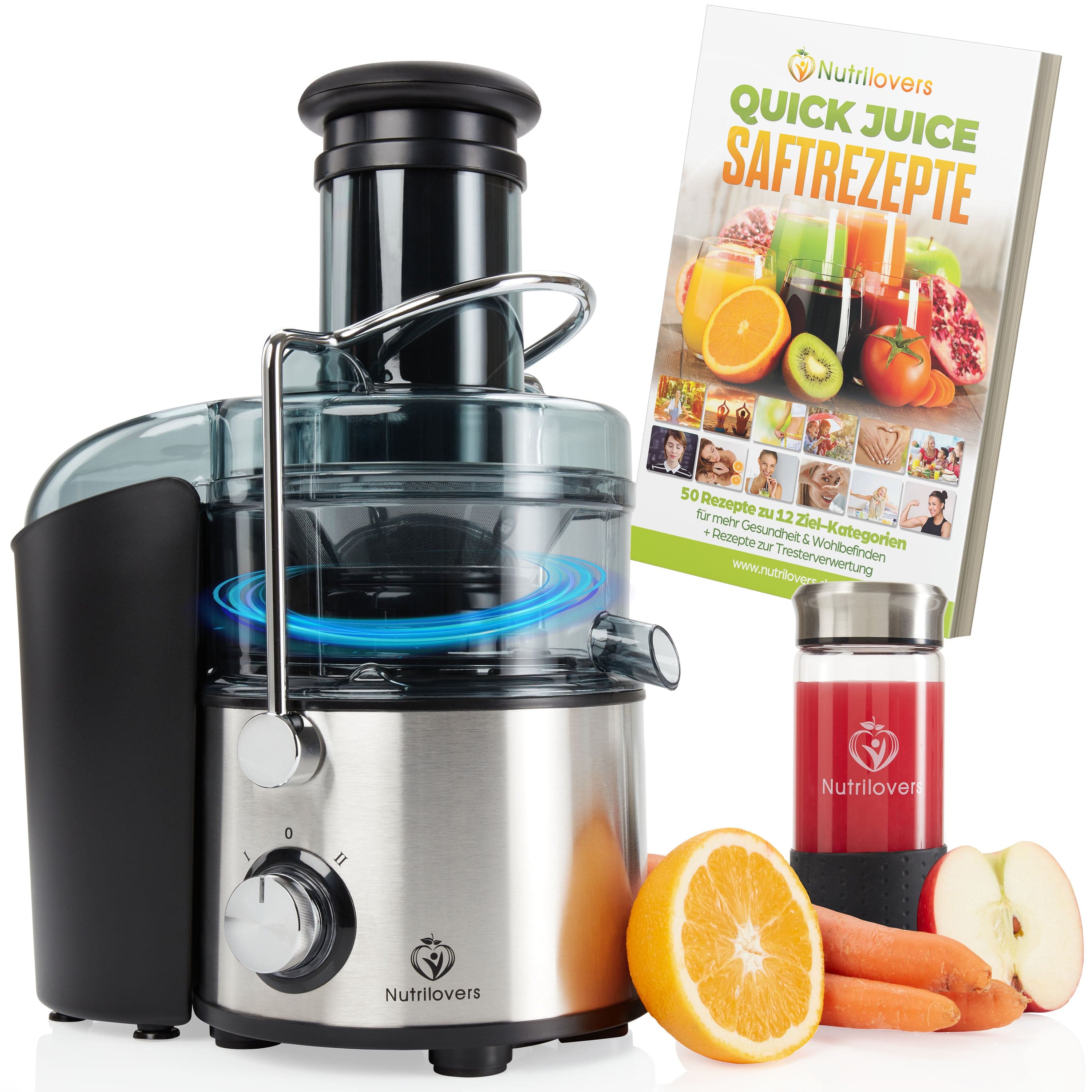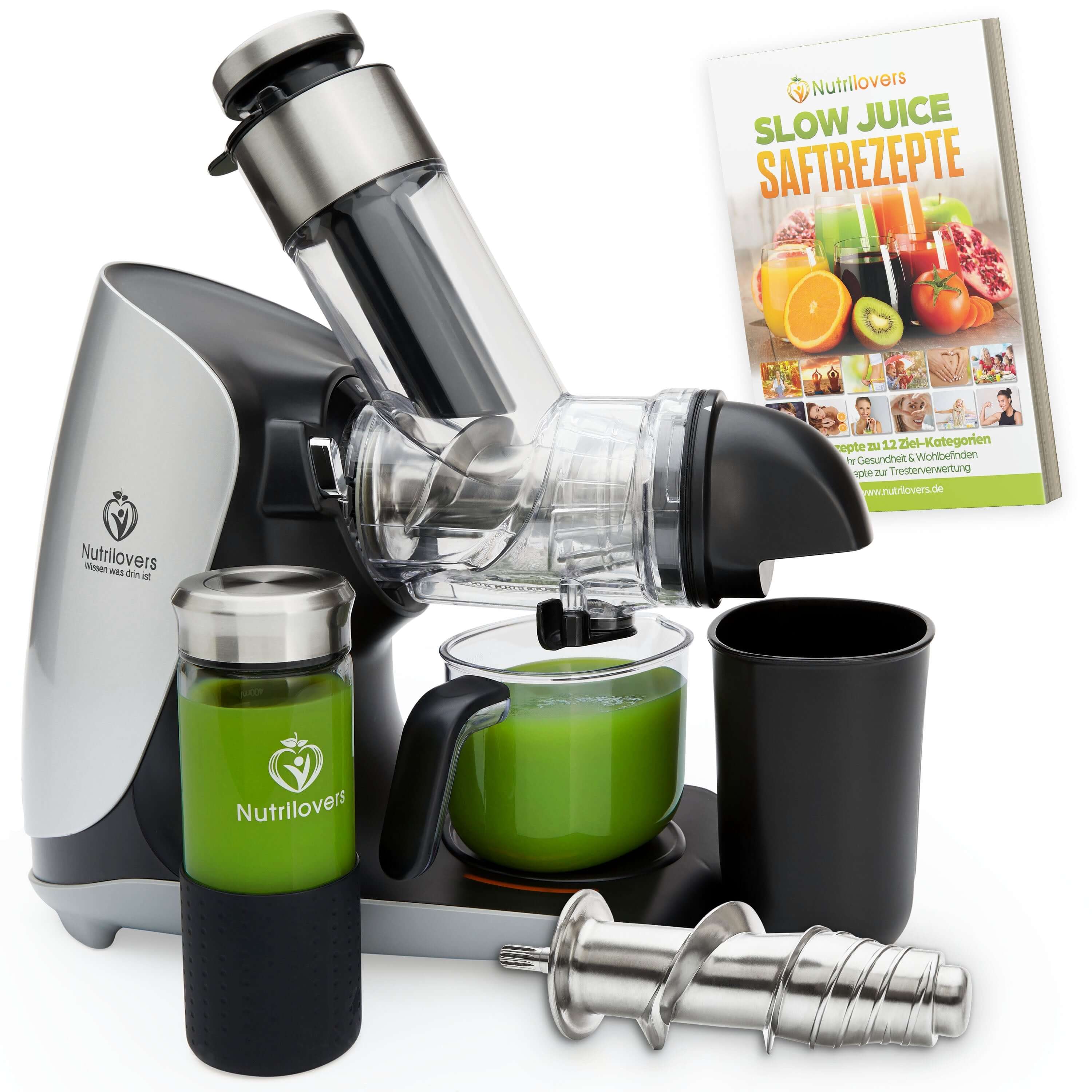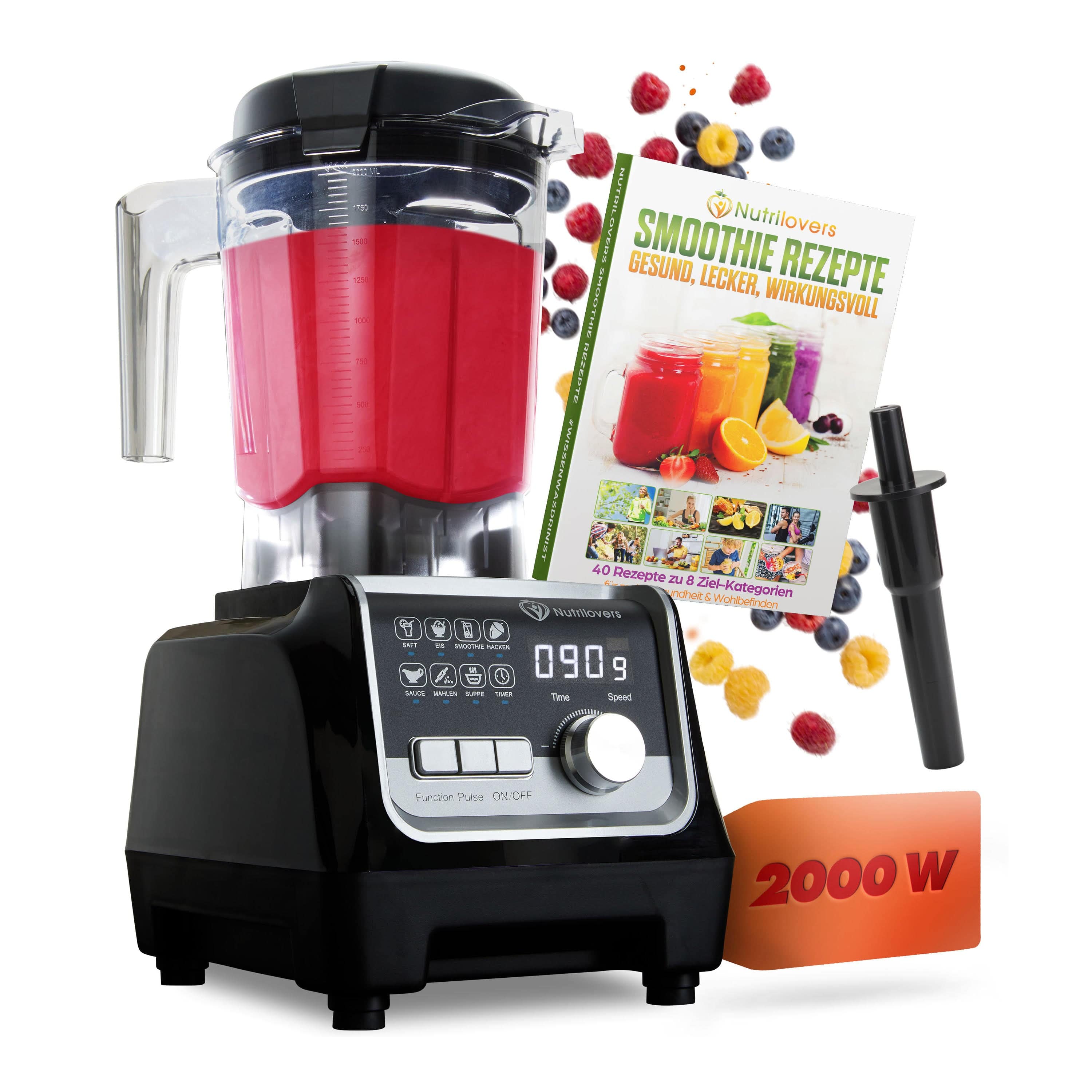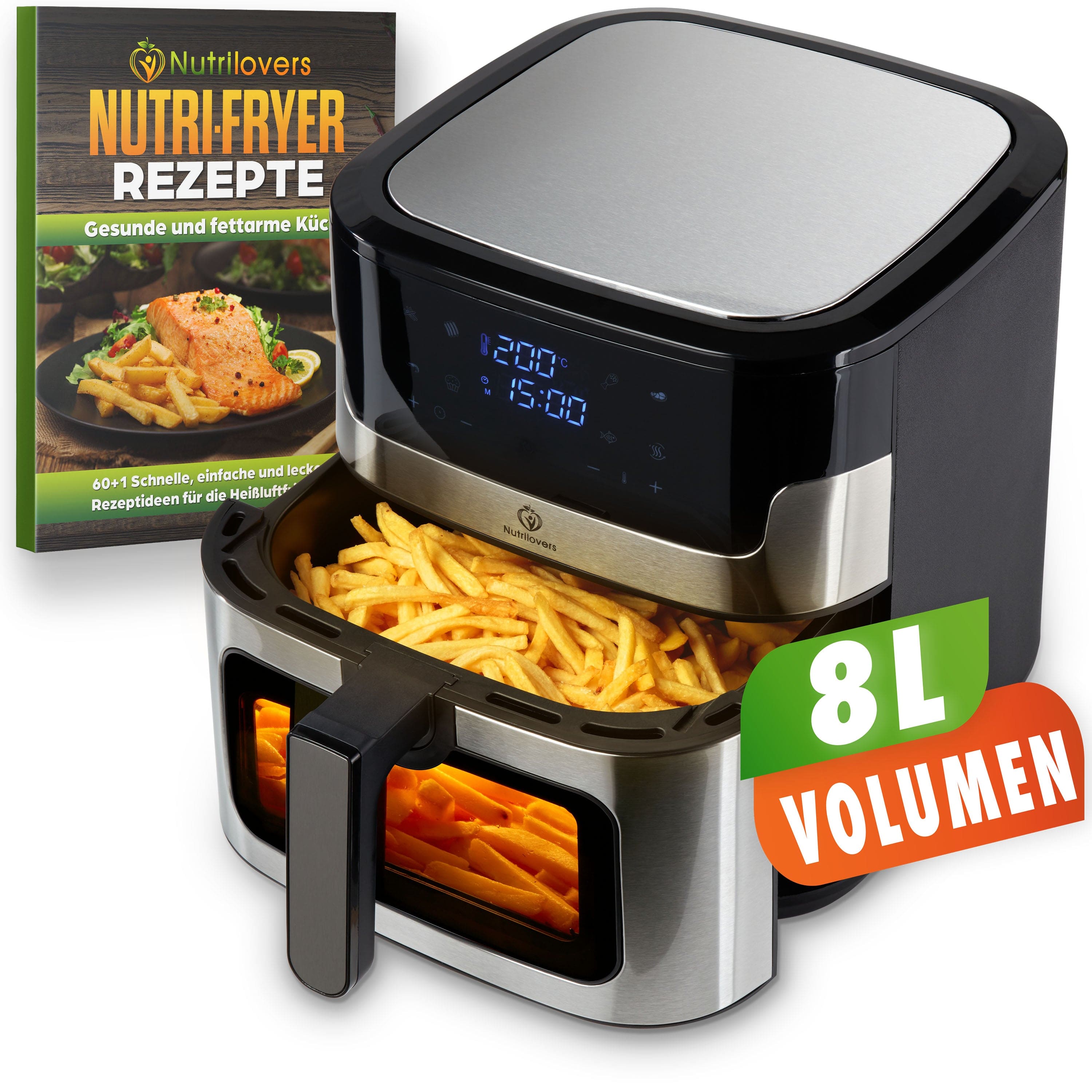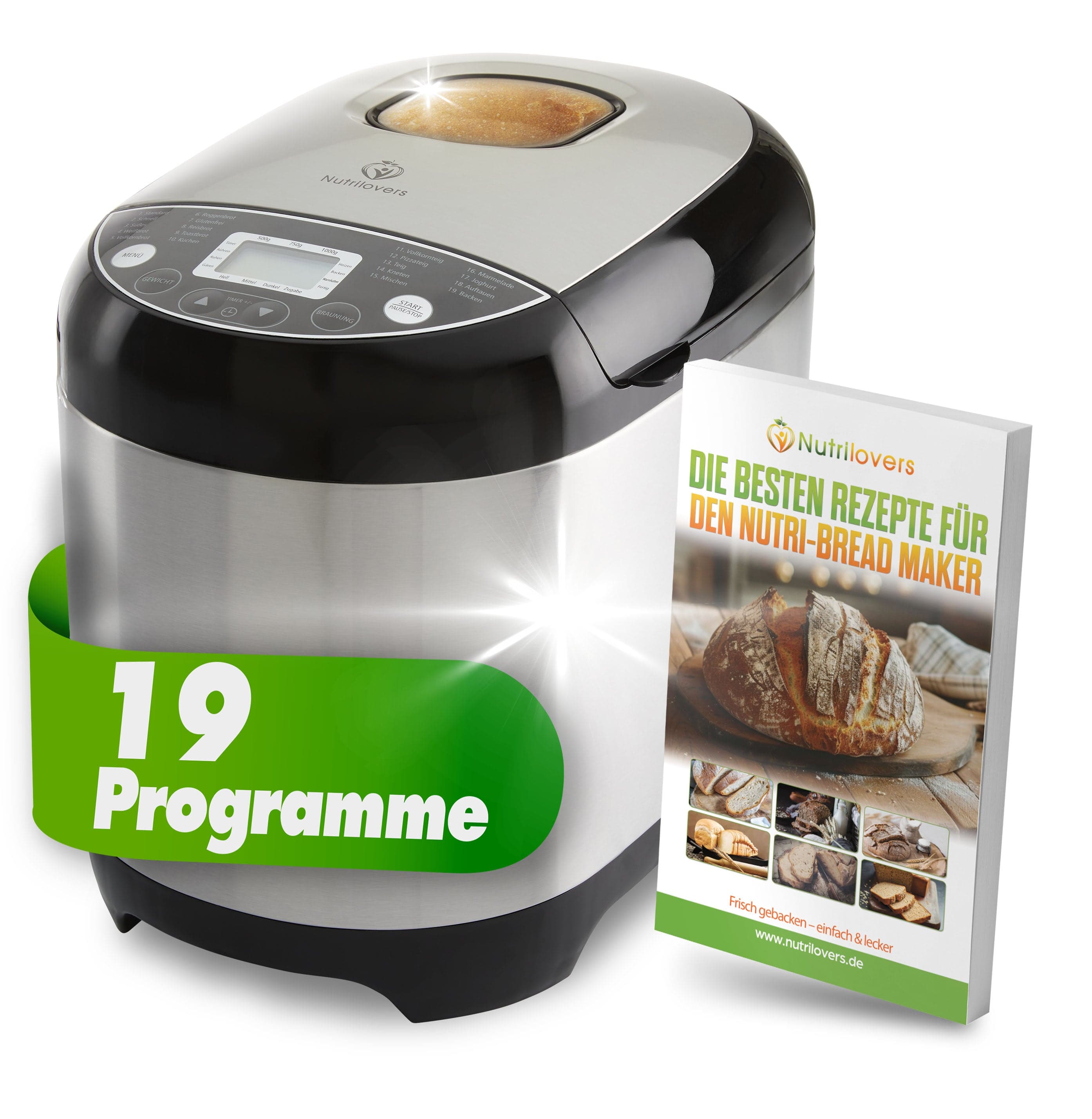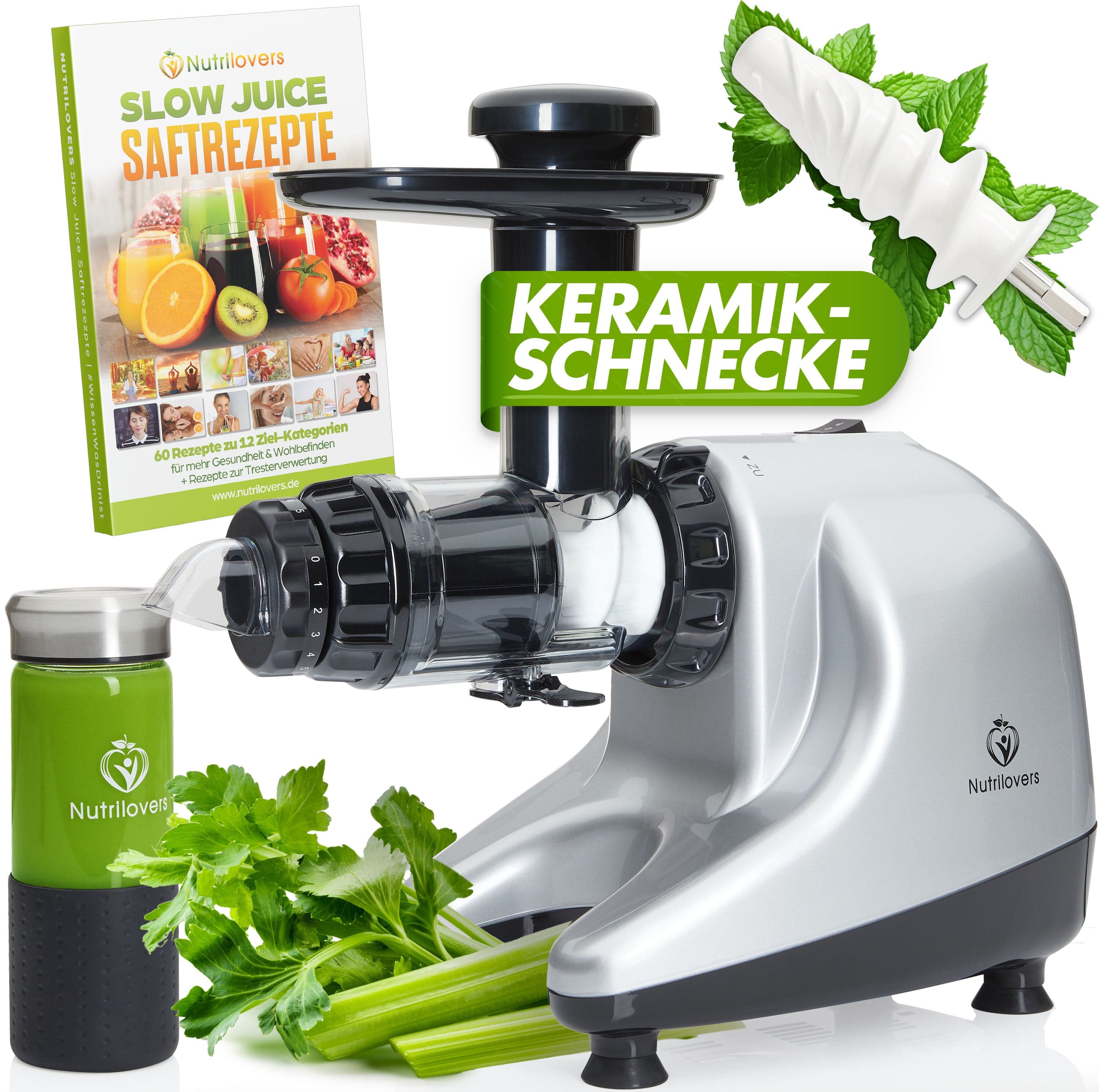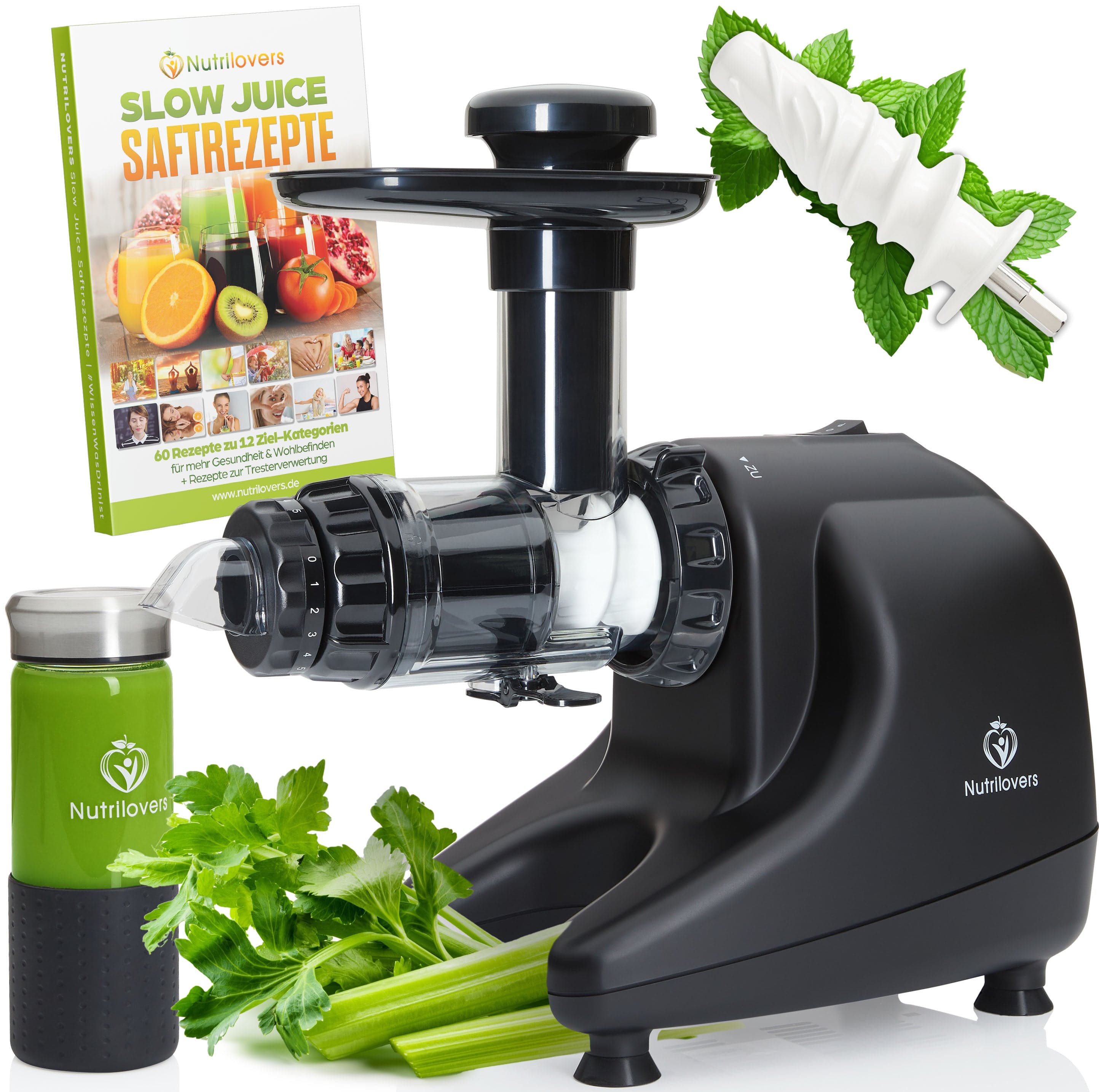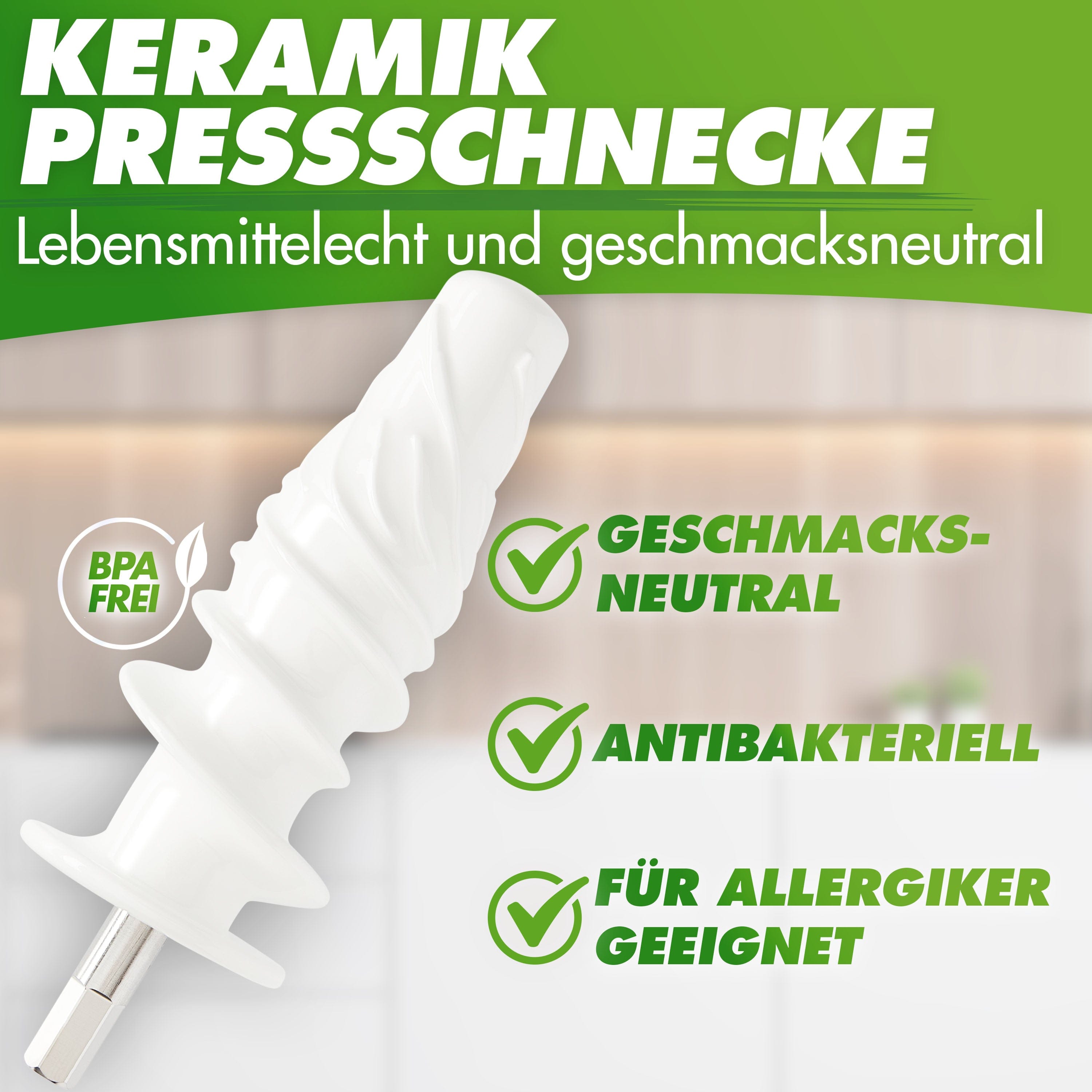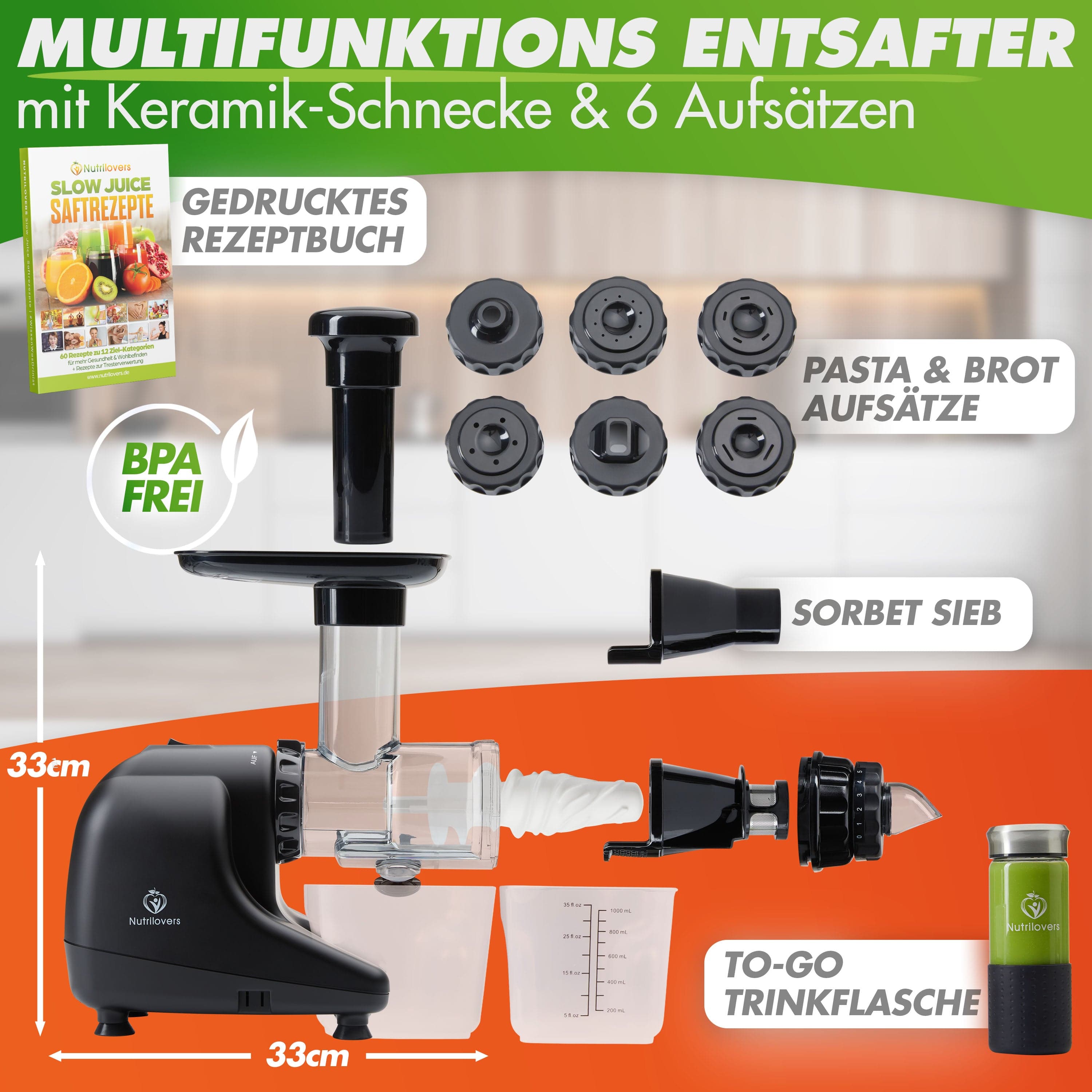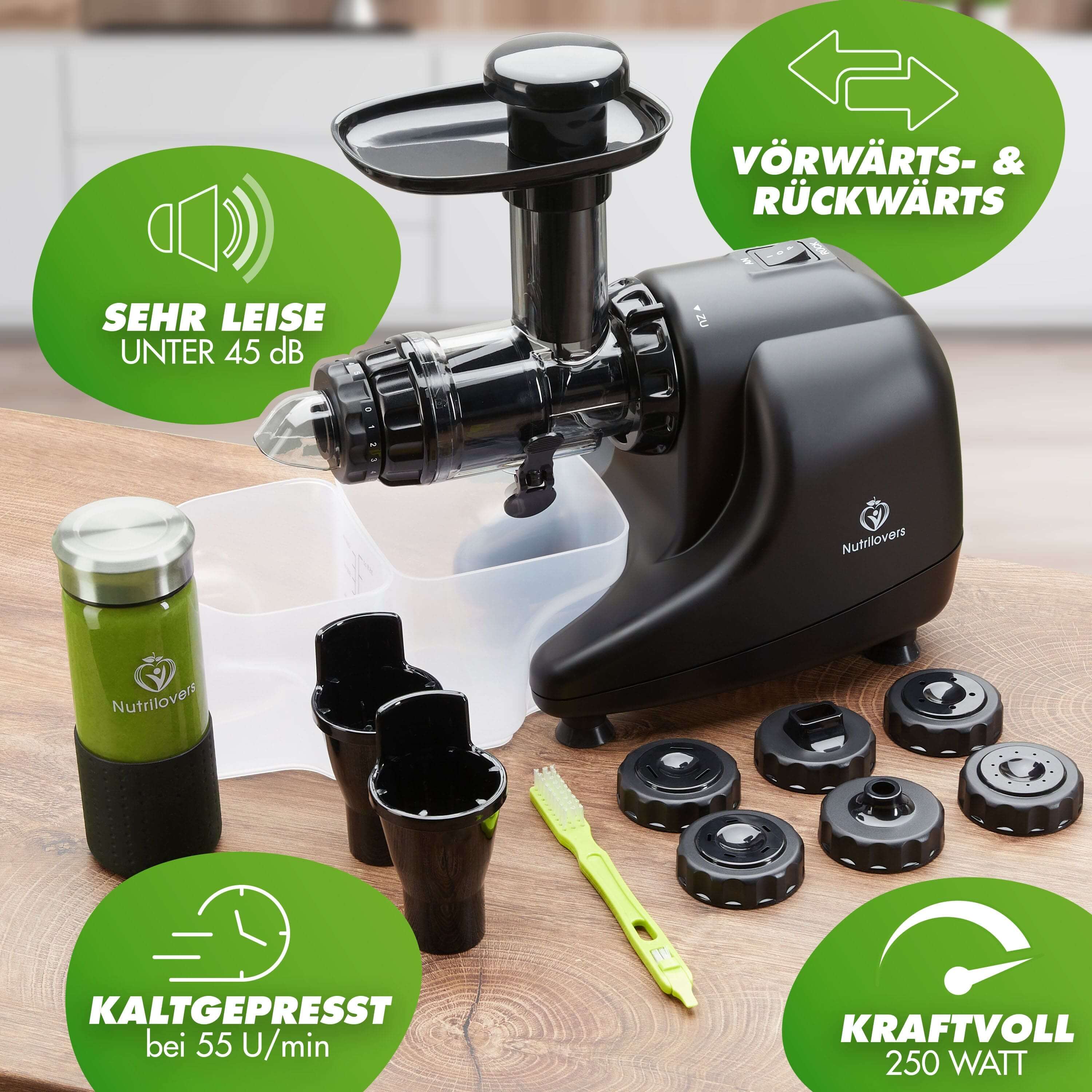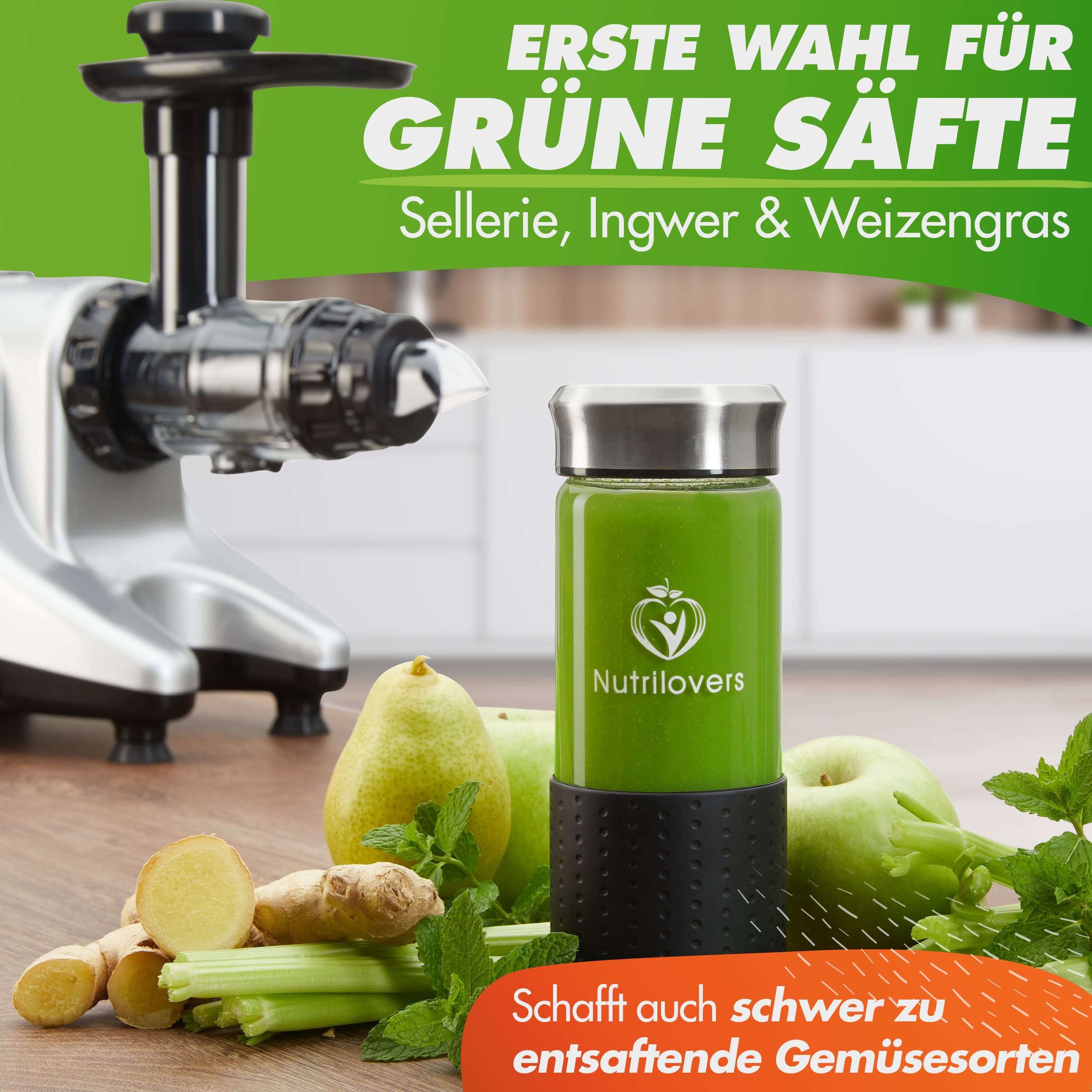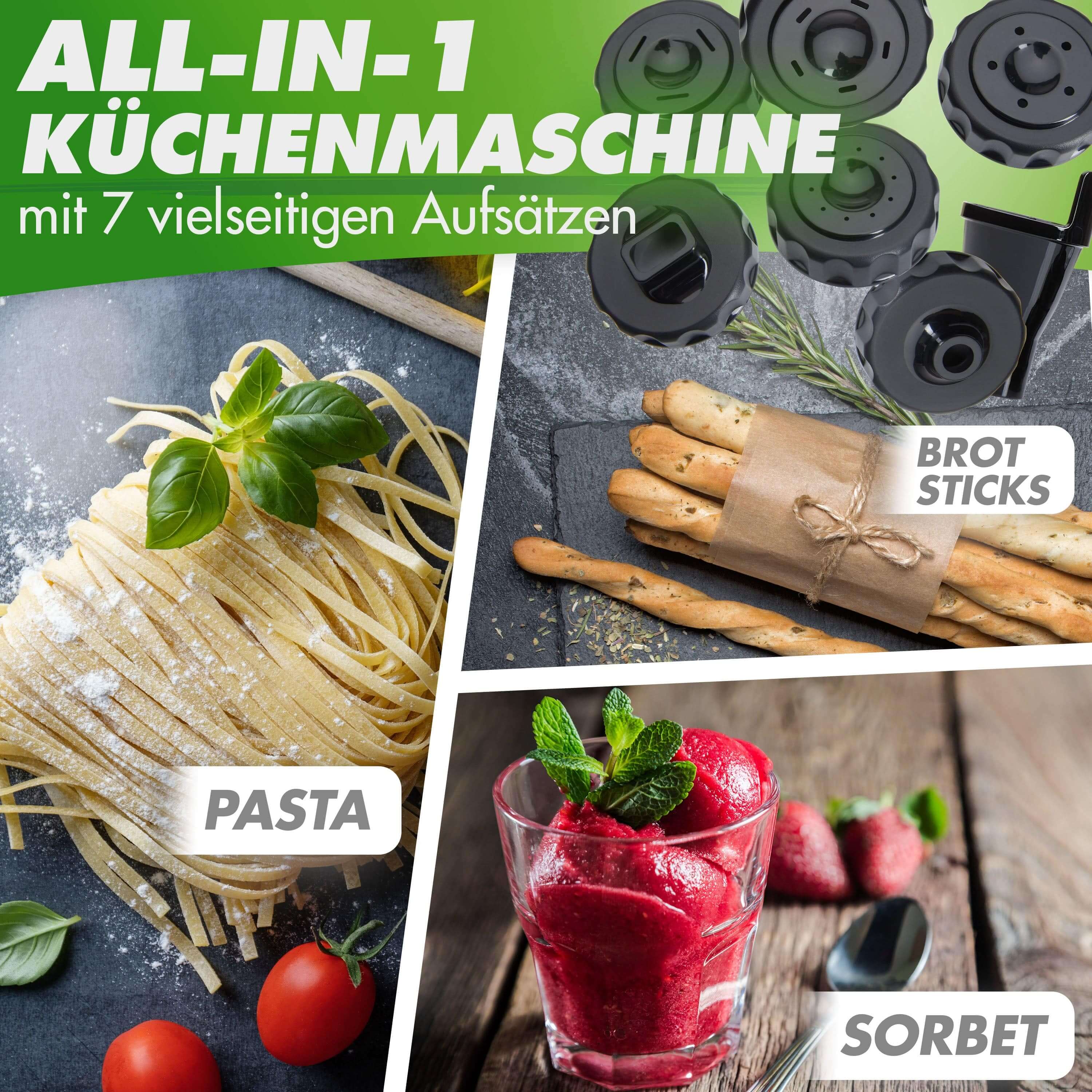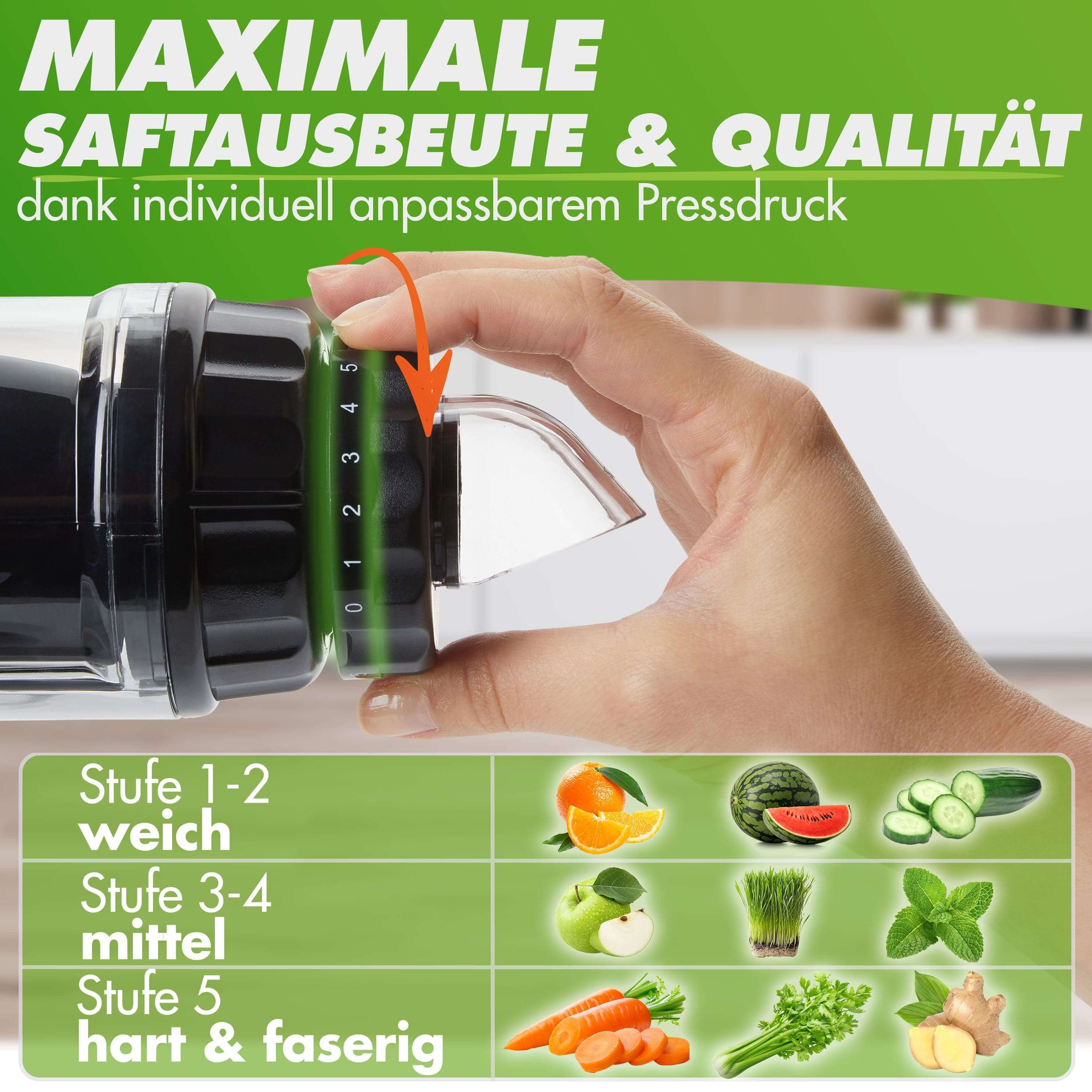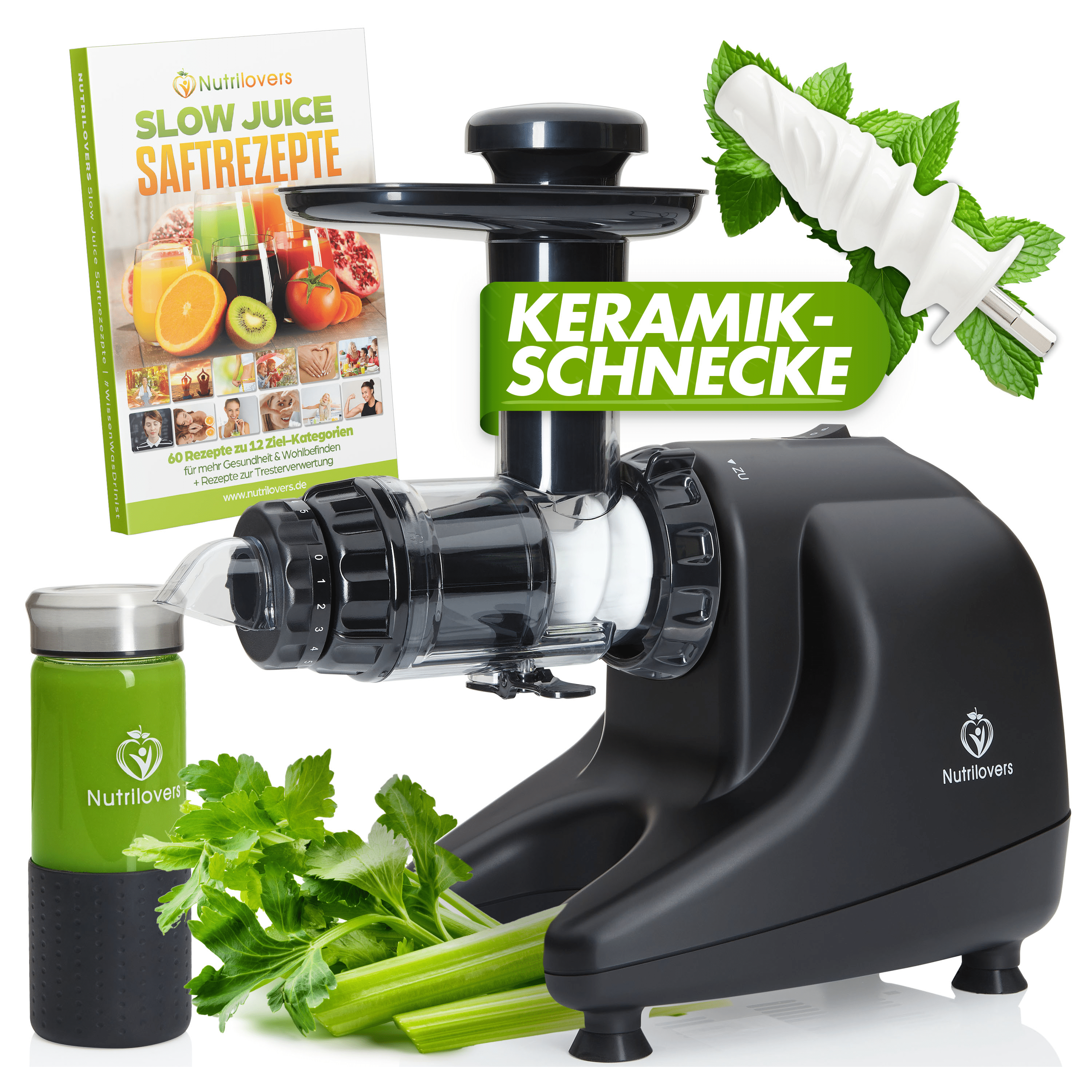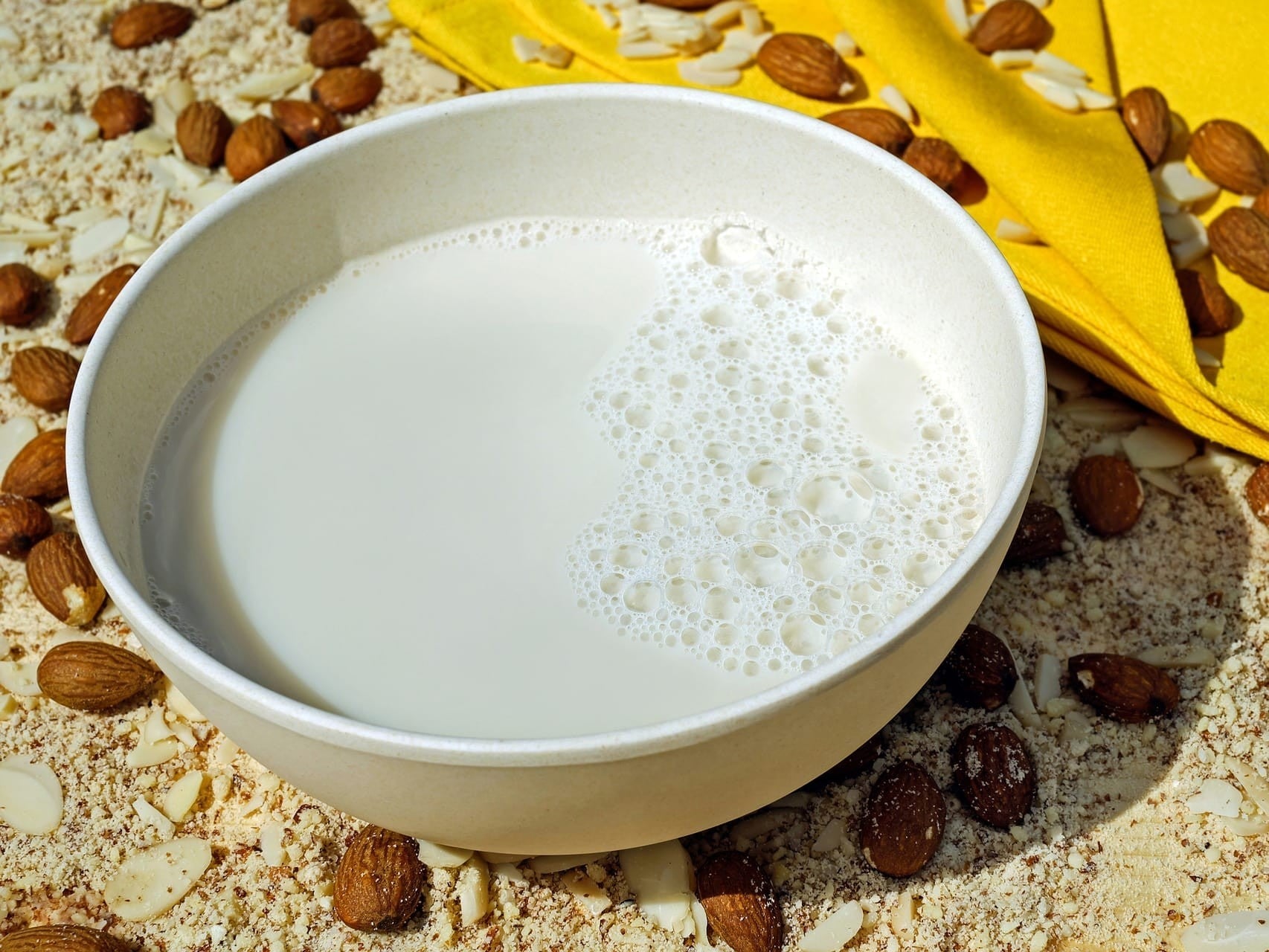
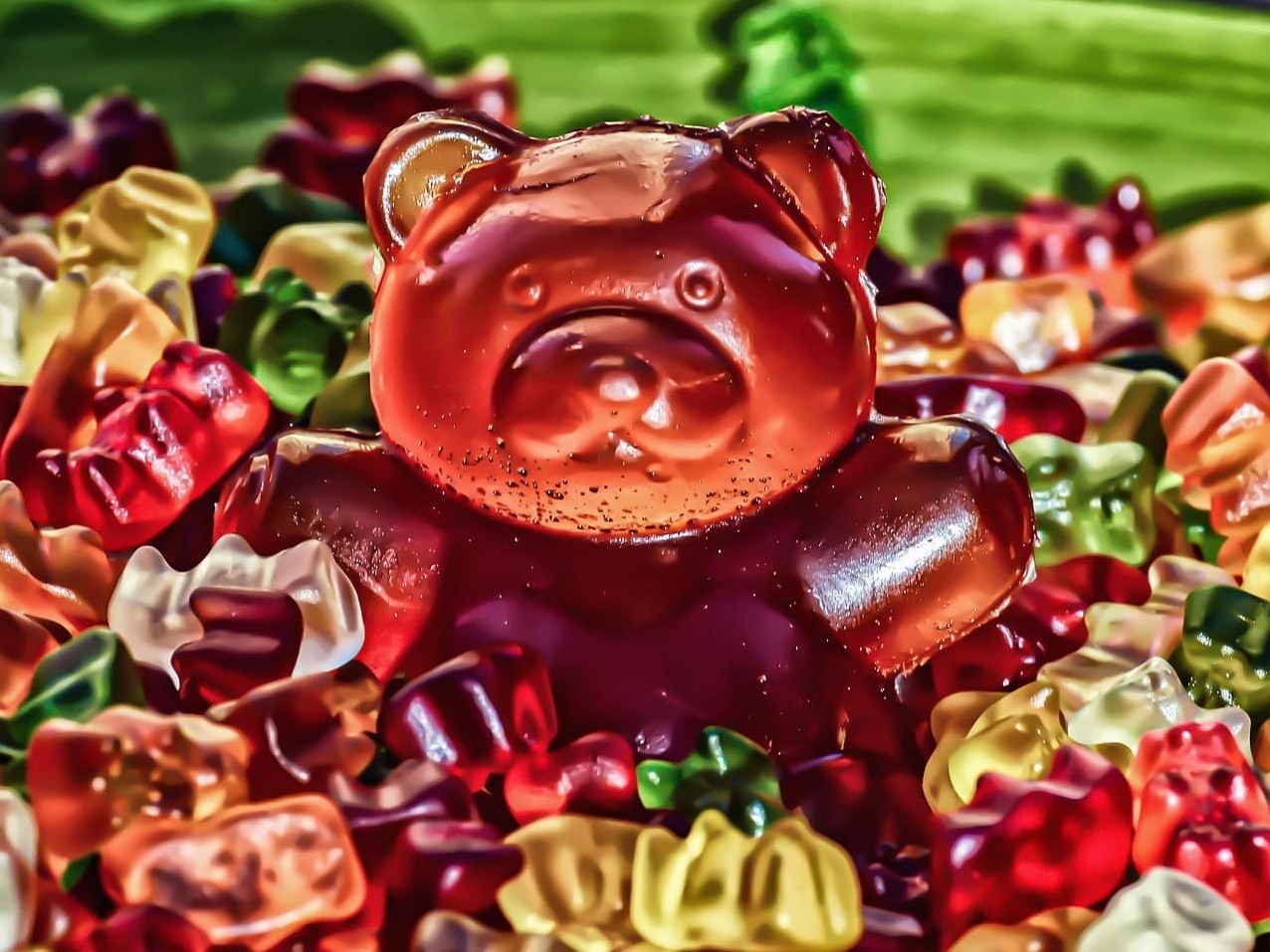
🐻 Homemade gummy bears | Recipe
Make your own vegan gummy bears from 3 ingredients Do you or your children love gummy bears? But you want to avoid gelatin and processed sugar? If you just can't get enough of fruit gum,...
Slow juicing & juicing
Frequently Asked Questions
Questions and myths about slow juicing. We clarify and reveal the truth.
What is “Slow Juicing” / “Slow Juice”?
Slow juice (literally translated: "slow juice" ), or so-called "slow juicing," was invented in Thailand and refers to a particularly gentle form of juicing, i.e., the extraction of juice from fruit or vegetables. With this method, the juice is pressed very slowly and carefully and, because no heat is generated in the juice, is also referred to as "cold-pressed."
Why is slow juice so healthy?
Slow juicing involves neither heat nor oxygen being introduced into the juice. This is what makes it so special. This pressing process preserves all the important nutrients, such as enzymes, vitamins, trace elements, and minerals, in the juice. All you need is a slow juicer, a special electric juicer that presses very slowly and gently, preserving the nutrient content of the juiced product to the maximum .
You can find out more about this topic in our blog article:
Slow Juicer vs. Centrifugal Juicer - What's the Difference?
With a slow juicer, the speed and rotation of the auger are crucial. Scientists have observed the chewing motion of the human body and determined that a chewing speed of between 30 and 40 movements per minute is optimal for optimal utilization of nutrients.
Only through this intense chewing motion can food be properly broken down and salivated. This is precisely the principle used by slow juicers.
Fruit, vegetables, but also grasses, herbs and salads are chopped slowly, gently and relatively quietly at 40 to 60 revolutions per minute and pressed out through a pressing roller or auger.
The cell membranes of the pressed material are gently broken open, releasing the valuable plant compounds and the valuable chlorophyll from green leafy vegetables and grasses . The result is a homogeneous, tastier juice. The pressed material has minimal contact with oxygen, which means the juice doesn't immediately turn brown and can be stored in the refrigerator for up to three days.
The only advantage of a centrifugal juicer is the time savings. However, the rapid juicing process is a nutrient killer. The juicer's centrifuge cuts up the pulp and expels the liquid, including vitamins, enzymes, and minerals, from the cell walls. Unfortunately, the juice is not only broken down into its components of water and pulp, but the high rotation speeds (up to 15,000 rpm) and the swirling oxygen also cause it to oxidize very quickly , thereby losing the important vitamins.
Therefore, the juice should be consumed immediately. Longer storage in the refrigerator is not advisable, as the flavor deteriorates quickly and the juice begins to taste sour after about 12 hours.
A slow juicer is therefore clearly the better choice if juice quality is your priority.
You can find out more about this topic in our blog article:
Horizontal vs. Vertical Slow Juicer - What's the Difference?
Horizontal slow juicers are characterized by a horizontal design and a press screw that is elongated and horizontally mounted
Vertical slow juicers, on the other hand, have a vertical design and the pressing auger is more round and is mounted vertically in the device.
Features of a vertical juicer:
• Larger press screw and therefore slightly faster preparation
• Larger filling opening, making filling easier
• Space-saving in the kitchen
• Slightly easier to clean
• Suitable for all types of pressed material
• Sometimes reaches its limits when dealing with fibrous material
• Various variations through the different sieves, such as smoothies, juices, ice cream/sorbets, tofu, soy milk
Features of a horizontal juicer:
• Press screw slightly smaller, preparation takes slightly longer
• Filling opening slightly narrower
• Requires a little more space in the kitchen (wider)
• Cleaning is slightly more complex (depending on the model)
• Suitable for all types of pressed material
• Ideal for fibrous leafy greens such as celery, wheatgrass
These points clearly demonstrate that there isn't one perfect juicer for every situation. Above all, you should consider whether you're primarily interested in making green juices with long-fiber pulp or whether you prefer blended fruit and vegetable juices.
However, the question remains as to what else should be prepared with the juicer, such as ice cream, sorbet, frozen yogurt or almond milk, or whether it is primarily intended for juices alone.
You can find out more about this topic in our blog article:
▷ Info: Vertical vs. Horizontal Slow Juicer - What's the Difference?
Buying a slow juicer - what should you look out for?
If you want to make fresh, self-pressed juices and get the maximum amount of vitamins and juice yield, you should use a slow juicer, a specific type of electric juicer, to juice fruit and vegetables at a cool temperature according to the slow juicing principle.
You should always pay attention to the following 10 points:
1. Low revolutions per minute
Older slow juicers extracted juice at up to 70 revolutions per minute. Newer machines now do this at only 45-60 rpm . The lower the speed, the better.
2. BPA-free
It's important that all plastic parts that come into contact with the juice are BPA-free (i.e., do not contain bisphenol A ) and that all parts have been tested for food safety. Tritan or ULTEM, which are BPA-free, are commonly used.
3. Low wattage
More watts, more power is better? Not with a slow juicer. With a slow juicer , 150–350 watts is the maximum wattage you should look for. This is less about energy efficiency than about juicing really slowly.
4. Press screw (vertical vs horizontal)
Horizontal juicers are best suited for juicing herbs, wild plants, grasses, lettuce, cabbage and other leafy greens.
The reason is that the finer pressing shafts are better able to handle the fibers in the greens. Vertical juicers are superior when it comes to quickly producing pure fruit and vegetable juices, or blended juices—especially from softer pulp. They produce a ready-blended juice from, for example, apple, carrot, or orange in a simple and quick way.
5. Are individual parts available?
All individual parts should be available for purchase separately, which is often difficult with many other manufacturers. With Nutrilovers slow juicers, you don't have to worry. All parts, including wear parts, are in stock for replacement – and if they're not, we'll source them for you! We also provide replacement parts at cost price and don't charge exorbitant fees.
7. Cleaning & Handling
The device should be easy to disassemble and reassemble. Operation and handling should be simple. Typically, the devices only work if everything is properly assembled, which provides additional safety. The individual parts should be easy to clean, and the device should include cleaning brushes for hard-to-reach corners.
8. German customer support
When purchasing a slow juicer, we strongly recommend making sure you have first-class German-speaking customer support. Since slow juicers contain more parts than smoothie blenders/mini blenders and assembly is somewhat more complex, it's very important to be able to get help quickly. A seemingly good deal from a Chinese supplier can quickly become a flop.
9. Return function
The forward and reverse function is a very practical feature that you absolutely shouldn't do without. The reverse function helps when pressing if pieces are blocking the press mechanism. These can then be easily released. This function is also very helpful for cleaning.
10. Accessories
Practical accessories such as a juice container with a drip stop for a constantly clean work surface, an insert for frozen ingredients, a pestle, a pulp container with a large capacity, a cleaning brush , the sieve made of stainless steel and various recipe suggestions are a big plus.
You can find out more about this topic in our blog article:
▷ Buy a slow juicer: 10 points you should definitely pay attention to
What distinguishes Nutrilovers Slow Juicer from other manufacturers/brands?
THREE THINGS distinguish us from other brands and manufacturers:
(1) We love slow juice! Nutrilovers was born out of a passion for slow juicing. We don't just offer slow juicers as another product in a huge product range. Our slow juicers are carefully selected and adhere to our criteria and quality standards. Consciously nourishing your body with natural and unprocessed ingredients is the foundation for a fulfilling life. Hence our motto: #KnowWhat'sInside. The ease of use and easy cleaning of our devices make this easy for you. So that as many people as possible can participate in our idea and achieve their goals, we offer our products in the mid-price segment, while at the same time paying particular attention to high quality.
(2) Customer focus! - Customer satisfaction isn't just marketing platitudes for us – we consider every customer a new Nutrilover in our Nutrilovers community. If you have any problems or questions at any time, please write to us. We're here for you!
Email via mailme@nutrilovers.de, Instagram / Facebook via @nutrilovers.de
(3) Trust! - In addition to the legally required 2-year warranty, Nutrilovers offers a 3-year warranty on the motor for slow juicers.
If anything goes wrong, we're available at any time and will take care of it – even after the statutory warranty period has expired. (You can find the relevant warranty terms and conditions here.)
Which Nutrilovers juicer is right for me?
The best and right juicer for you depends on your individual needs and preferences. There are different types of juicers, including centrifugal juicers , slow juicers (also known as cold press juicers or slow juicers), and citrus juicers. Here are some considerations to help you choose the right juicer:
All models at a glance:
NUTRI-PRESS Slow Juicer for Beginners
Entry-level model. A particularly affordable slow juicer with a low rotation speed of 60 rpm and a good juice yield. Very easy to assemble and disassemble. Easy to clean. Ideal for anyone who wants to get started with slow juicing without any complications.
MINI-PRESS SLIM
The compact design makes the Mini Press ideal for smaller kitchens and households or if you don't want to miss out on your daily celery juice while on vacation or business trips.
- 2 levels for hard & soft
- Particularly gentle with only 60 rpm
- Easy cleaning & dishwasher-safe parts
- Incl. to-go glass drinking bottle + recipe book (print version!)
NUTRI-PRESS NO.1
Premium stainless steel slow juicer - The Nutri-Press No.1 offers an even higher juice yield and even better juice quality thanks to its design and even lower rotation speed of only 45 rpm.
With three extra strainers plus a hand strainer, the NP1 offers even more possibilities. In addition to the fine strainer for juice, there's a coarse strainer for smoothies, a smooth strainer for ice cream/sorbet , and a hand strainer for pulp recycling. Soy milk and almond milk can also be made with the Nutri-Press No.1.
Assembling the Nutri-Press No. 1 is somewhat more complicated due to its more complex design and components. To make assembly easier, we've provided a video tutorial on our website.
GREEN-PRESS MAX STAINLESS STEEL
Ideal for greens (+fruits & vegetables) – The GREEN-PRESS horizontal slow juicer with its high-quality stainless steel auger (BPA-free) is ideal for wheatgrass, celery, leafy greens, and other difficult-to-juice vegetables, herbs, lettuce, and sprouts. Perfect for green juices, detox juices, soy milk, extracts, gastrointestinal juices, and juices for weight loss.
A horizontal slow juicer with a solid stainless steel auger. BPA-free. If you don't want to compromise on juice quality and want to treat your body to the best, then the GREEN-PRESS MAX STAINLESS STEEL is your choice!
QUICK-JUICER centrifugal juicer
Powerful centrifugal juicer in stainless steel design, with XXL filling opening, 304 stainless steel filter.
Thanks to the powerful 800W Quick-Juice technology, you can juice fruit and vegetables quickly and efficiently.
Even hard ingredients like apples, carrots and beetroot are no problem.
You can find out more about this topic here:
Which fruit is suitable for the slow juicer?
Basically, you can juice almost any fruit in a slow juicer.
Fruit is delicious and rich in vitamins and minerals , and we all know it as a great source of juice. Since childhood, we've enjoyed apple juice, orange juice, multivitamin juice , and so on. Fortunately, you can juice any fruit imaginable at home with a slow juicer , creating fresh, delicious, and healthy juices for you and your family.
Our personal top 10 fruits for slow juicing:
1. Apple
2. Pineapple
3. Tomatoes
4. Oranges
5. Berries
6. Cherries
7. Grapefruit
8. Melon
9. Pear
10. Lemons, limes
You can find more information on this topic in our blog article: ▷ Which fruit is suitable for the slow juicer?
Which vegetables are suitable for the slow juicer?
Just like fruit, vegetables are also easy to juice. Delicious vegetable juices are ideal for those who struggle to get their daily portion of vegetables. If pure vegetable juices aren't quite your thing, you can also blend your vegetable juice with other vegetables or fruits for a delicious juice combination.
In principle, you can juice any vegetable that can be eaten raw. However, vegetables with a high water content (such as cucumbers) form your base juice.
Green leafy vegetables such as spinach and kale also provide you with many nutrients, vitamins and minerals .
Below you'll find our top 12 vegetables to put in your slow juicer . They're all rich in nutrients , contribute significantly to your health, and are great for juicing.
Our personal top 12 vegetables:
1. Celery
2. Carrots
3. Cucumber
4. Broccoli
5. Fennel
6. Kale
7. Spinach
8. Kohlrabi
9. Wheatgrass
10. Peppers
11. Beetroot
12. Ginger & Turmeric
You can find out more about this topic in our blog article: ▷ Which vegetables are suitable for the slow juicer?
Which ingredients are NOT suitable for the slow juicer?
While fruits and vegetables are generally great for juicing, there are some vegetables that don't juice as well as others. Some simply don't have enough water content to juice, while others have a consistency that makes juicing difficult.
Not suitable for juicing:
1. Avocado
2. Banana
3. Figs
4. Mango
5. Eggplants
6. Dates
7. Rhubarb
8. Green beans
9. Elderberry
10. Coconut meat
11. Overripe, very soft fruit
It is also important to note that a slow juicer is not a mixer/blender, which means that ingredients such as nuts or seeds cannot be added like you would in a smoothie.
You can find out more about this topic in our blog article: ▷ Which ingredients are NOT suitable for the juicer?
Further questions?
Contact us by email: mailme@nutrilovers.de , subject: Question and we will get back to you quickly with an answer.
We look forward to seeing you!
Your NUTRILOVERS team | #KnowWhat'sInIt

